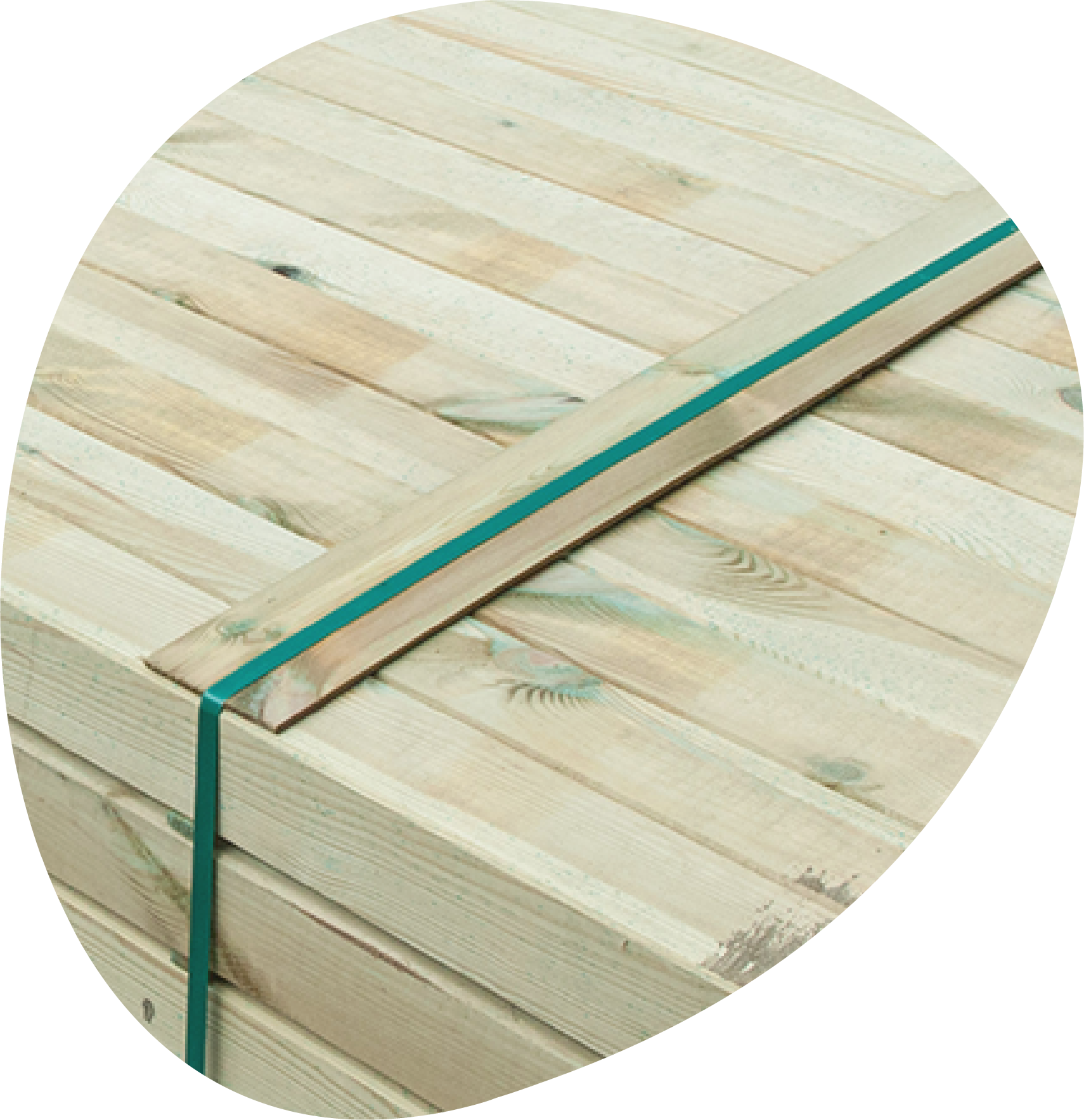1. What does “pressure treated timber” mean?

Pressure treated timber, also referred to as “impregnated”, is timber that has been treated with a preservative, offering long-lasting protection against fungi and insects. To achieve that, timber is inserted in a closed horizontal cylinder in which a vacuum is created. Then the preservative is admitted while pressure inside the cylinder rises to achieve greater penetration of the substance through the timber body and its cells. After that, any residue of the preservative is completely removed. Finally, the process is completed after the timber has been left to naturally dry in a sheltered area, to ensure better results.
2. Why should be tinder subjected to a treatment like that?

Wood is a renewable and natural material, which is continuously available, thanks to sustainable forest management. Nevertheless, it is also an extremely sensitive material if not treated correctly. More specifically, when timber comes in contact with soil and water for a long period of time, it is quickly affected and, in most cases, ends up rotting. Furthermore, natural timber is exposed against fungi and other microorganisms’ attacks, that also contribute to its corrosion.
There are only a few types of timber that, by nature, are very resistant against rot and attacks by insects. Yet these are mostly tropical hardwoods and consequently considerably more expensive, while the circumstances under which they are logged are usually illegal.
Most types of timber must be treated before they can be used to serve a purpose that will have them last a long time. By being treated, timber is given a service-life many times longer than the one it would have otherwise, while the additional costs are low, particularly when compared to the generally high costs of maintenance and replacement of untreated timber.
3. How durable is wood?

The natural durability of wood depends very much on its type, the density, the age of the originating tree and the circumstances under which the wood is used. Timber treatment provides protection against all those variables, allowing the timber to be used in a wide range of applications.
4. Can timber pressure treatment be applied to all types of timber?

Unfortunately, not. Differences in timber structure don’t allow the same degree of preservative penetration, resulting to its insufficient impregnation. For example, the preservative manages to penetrate norway spruce timber for only just a few millimeters, while it manages to reach the core when used on pine tree timber.
5. How to choose a wood preservative?

To be effective, a wood preservative must possess the following properties:
- toxicity towards wood-destroying organisms
- sufficient penetration ability
- permanence in the treated wood
- beneficial properties for the wood
- zero effect on metals
- safe to use and be exposed to for long periods of time
The evaluation of the substances and the assessment of whether or not they fulfil the above-mentioned criteria, is carried out according to regulations and procedures as determined by each respective European country, always in alignment with the European Union guidelines in reference to biocides. Only when the assigned authorities have carried out all the necessary tests for a preservative, can the certified pressure treatment factories use it.
6. Is treated timber environment friendly?

Of course. Timber that has been treated according to the regulations in place and with authorized preservatives, does not constitute any kind of danger for human, animals or plants. Despite all that, researchers, as well as government authorities, continuously seek new means and methods for timber treatment while also reevaluating the already existing ones. Up until now, all studies have verified the safety of the treated timber for both humans and the environment.
7. Where can I use treated timber?

Impregnated timber is used for:
- every type of outdoor structure (fences, floors)
- garden/pool furniture
- pavement blocks
- decoration (wooden plant pots)
- playground equipment, carports and pergolas
- stakes for fruit and wine-growing
- bulwarks
- landing stages, jetties and lake and sea embankments
- industrial cooling towers
- railway sleepers, crossings and bridge timbers
- electricity and telephone poles
8. Can children play safely on playground equipment made of treated timber?

Several studies have concluded that there is no danger in playing on treated wooden playground equipment. There is no danger of the applied preservative leaching, even in case it comes in contact with the mouth.
9. Is treated timber safe to use in vegetable patches and gardens?

Treated timber is completely safe. It is ideal for borders, sawing boxes, cases, mushroom boxes, rose structures, pergolas, compost boxes, beanstalk, etc. There is no risk of damaging plants or of plants taking up components of preservatives from the wood.
10. Is treated timber safe for humans?

If used properly (according to EU regulations) and for the intended use, treated timber does not pose any health risks for humans. With every purchase of treated timber, the customer has the right to ask for treatment certification.
11. Is it necessary for vacuum and pressure treated timber to be painted?

No. That is not necessary since the preservative shields it completely against all the factors that constitute a threat to its longevity. However, there is an aesthetic aspect too. After a while, unpainted, treated timber will change color due to its exposure to outdoor weather conditions. The speed in which this happens depends on the space where the timber is used and its preservation process. We suggest varnishes with or without color, that soak into the wood, hve no smell and are eco-friendly. The only prerequisite for them to be used is for the timber to be dry before they are applied.





















